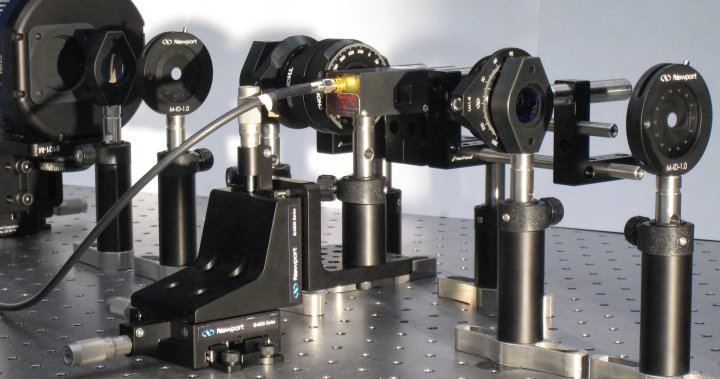In addition to 13 Canadian universities, the Canadian Space Agency, Environment and Climate Change Canada, and the National Research Council of Canada, two researchers from the University of Saskatchewan are participating in a NASA multi-satellite mission.
The launch dates for this mission, which intends to provide better climate, weather, and air quality forecasts, are 2028 and 2031.
High altitude aerosols, water vapour, and clouds (HAWC) is the name of the Canadian contribution to the project, and USask is working on two components of that project, the ALI (Aerosol limb imager) and the SHOW (Spatial heterodyne observations of water).
They are developing tools to measure the atmosphere, according to Adam Bourassa, a professor of physics and engineering physics at the University of Saskatchewan.
We create cutting-edge sensors and tools in our lab to assess the atmosphere from space using satellite platforms to study issues like pollution, climate change, and the ozone layer, according to Bourassa.
In addition to aiding in modelling predictions, the total project will help in planning for extreme events including winter storms, wildfire smoke plumes, and heavy precipitation.
One of the equipment, according to Bourassa, monitors aerosols in the atmosphere, which are minuscule droplets or particles that may result from pollution, smoke, or dust.
Aerosols, he continued, have a variety of effects on the atmosphere, including changing cloud composition, temperature, and precipitation patterns.
Bourassa said the early idea for this project started 10 years ago, and that integrating the use of new technology that has never been in space was a long-time challenge for the team.
Both sensors being developed at the lab use the scattering and absorption of light from molecules to analyse the composition of the atmosphere, according to Doug Degenstein, a professor of engineering and physics at USask.
He continued, pointing out that one of the instruments is in its third iteration, that as funding has expanded, they have been developing better tools.
In essence, they are now prepared for space.
The design and testing are complete, but the space base mounts have not yet been constructed, according to Degenstein.
He noted that engineers from the Canadian Space Agency will be reviewing everything with them and that reviews are imminent.
Graduate students have also been heavily involved in the research, according to Degenstein.
The ALI instrument has been conceived, constructed, tested, revised, and constructed numerous times—primarily by graduate students.
”
Canada has donated more than $200 million to this NASA initiative, according to a Canadian government release.
These tools are highly helpful, according to research scientist Jason Cole with Environment and Climate Change Canada.
“It gives me data that I can use to understand the science and observe what’s happening in the atmosphere,” Cole said.
He claimed that better weather forecast models will be available, and that users would be able to use this data to cross-reference the new models.
Cole highlighted that having all three HAWC devices operating simultaneously will provide the public with useful information.
He gave the example of how a volcanic explosion could be examined in order to forecast its repercussions.
“We’d want to be able to know the eruption happened and actually forecast what the impact on the climate would be continuing forward into the following season, the next year.”
NASA seeks assistance from US researchers for a climate science satellite programme.

